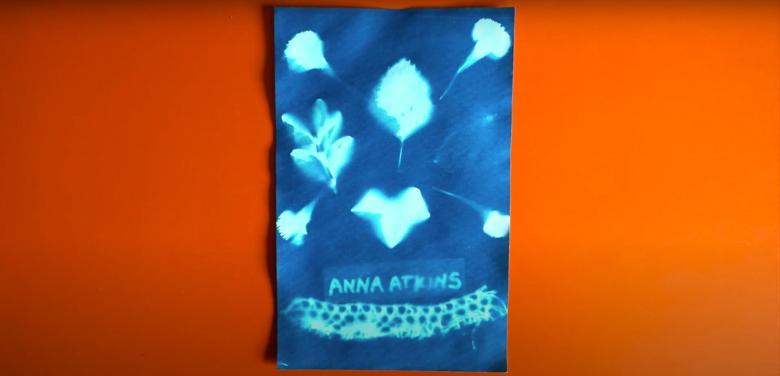
Follow this step-by-step guide to create your own photogram.
A photogram is an image produced on light-sensitive paper without using a camera or lens. An English inventor named William Henry Fox Talbot (1800-1877) created photograms in his early experiments, and his friend Sir John Herschel (1792-1871) helped him to fix the prints to make the image permanent and light-proof using a chemical called sodium thiosulphate.
To make a photogram, objects such as leaves, buttons, lace, a scissors etc., are placed on top of a piece of photographic paper and then exposed to daylight. A negative image of the objects is created on the page: the areas that are covered by the objects show up white, while the areas of the paper that are exposed to light show up dark.
Let's make a photogram!
Materials:
- Sunprint or nature paper (This is light-sensitive paper that can be bought online or in an art supply shop)
- A piece of stiff card
- A large sheet of black card folded in half
- Tracing paper or clear plastic acrylic cover
- A shallow dish of cold water
- A selection of interesting objects e.g. leaves, buttons, lace
Instructions:
- Decide how you would like to arrange your objects into a composition.
- Place the sunprint paper, with the blue side facing up, on top of the stiff card.
- Arrange your objects into your chosen composition on top of the blue sunprint paper.
- Cover the objects with the sheet of plastic to hold everything in place and place inside the folded black card.
- Go outside and remove your composition from the folded card and place it in direct light until the sunprint paper turns light blue.
- Place it back inside the folded black card to transport it inside.
- Place the sunprint paper only in the dish of water for three minutes. Make sure it is completely covered with water.
- Remove from the water and allow to dry.
Credits:
Video by Brian Cregan for the National Gallery of Ireland.
Explore more
-

Secondary School Resources
PDFs and online resources available in English and Irish.
-

Primary School Resources
Download resources for primary school students
-

Moments in Time Podcast Series
A series of podcasts produced to accompany our 2019 exhibition Mo
